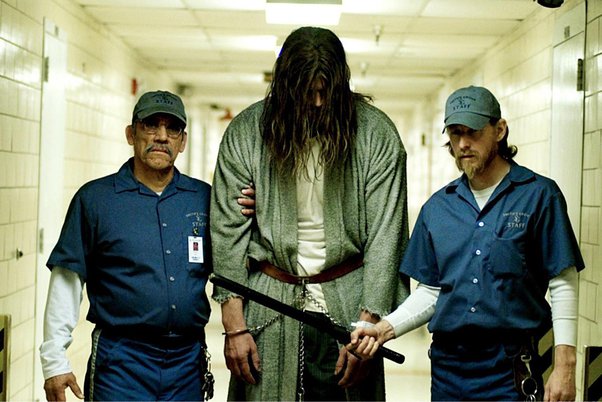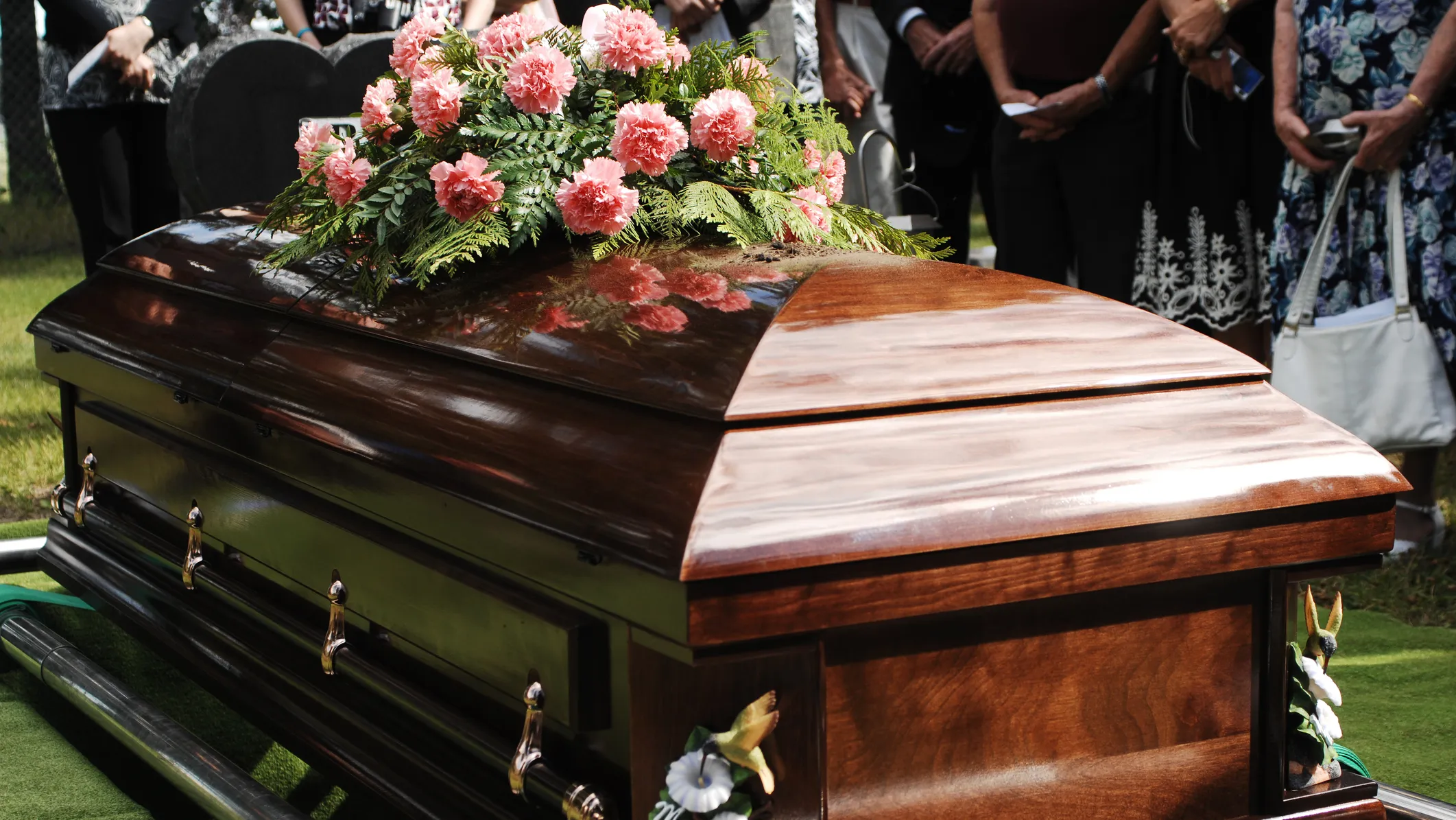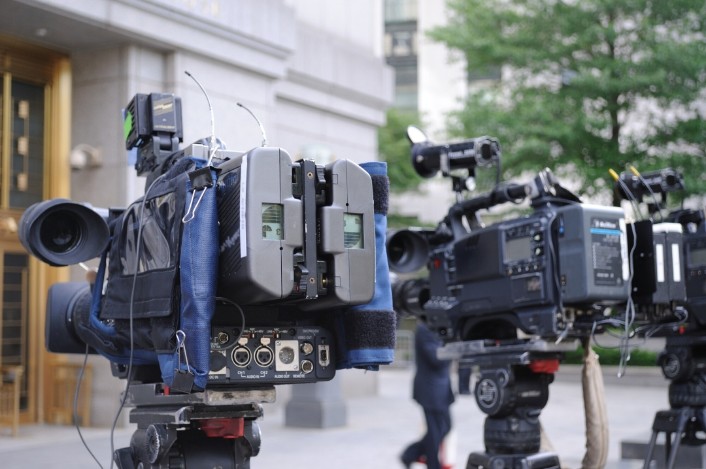
Elevating a villain’s height is a simple yet effective technique to enhance their intimidating presence. Have you ever wondered about the imposing figure of Michael Myers, the iconic masked killer from the Halloween franchise? One notable aspect of his character is his remarkable height, which varies across different actors and films.
However, The main actor Michael Myers, James Jude Courtney, is 6’3” tall. Nick Castle, who played the role in 1978, is 5’10”.Tyler Mane, who appeared in the 2007 sequel, Halloween, stands at an impressive 6’9”, almost reaching 7’.
Let’s explore the dimensions of Michael Myers in the world of horror.
Who is Micheal Myers?
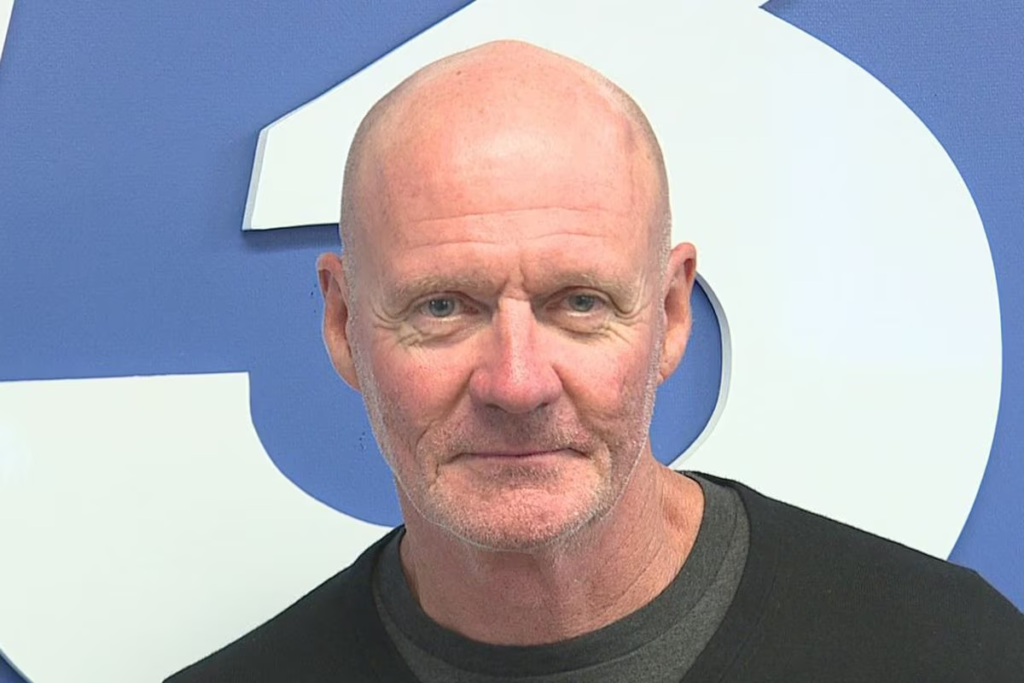
Michael Myers is a fictional character in the Halloween movie series. He’s a creepy killer who wears a white mask and a blue jumpsuit. Created by John Carpenter, he’s known for chasing victims and appearing in many Halloween movies.
Is Michael Myers Supernatural?
Yes, Michael Myers’ supernatural connections have been a recurring theme in the Halloween film series, albeit with varying interpretations across different installments. Further, Each collection of films brings its own lore, often reshaping the backstory of how this killer evolved into the iconic monster he is today.
In “Halloween: Curse of Michael Myers,” a storyline is introduced where Michael Myers is cursed by the Cult of Thorn, an ancient cult venerating a demon named Thorn. According to this lore, the curse bestows supernatural strength and the ability to withstand fatal injuries upon a chosen host, who must then sacrifice a family member annually on Halloween.
Also, this sacrifice ensures the survival of the host and their connection to Thorn. In this iteration, Myers becomes fixated on eliminating his only remaining family member, Laurie Strode, to evade the grim fate of the sacrifice.
However, certain films in the franchise opt to discard the “Curse of Michael Myers” lore, presenting Myers as a purely homicidal man devoid of supernatural connections.
For instance, “Halloween H20,” set right after “Halloween II,” abandons the supernatural aspect. In this film, Laurie Strode decapitates a Michael Myers imposter, revealing that the actual Myers had crushed the vocal cords of a paramedic, leaving him unable to speak. Driven by his own traumatic experiences and a twisted desire to emulate the infamous killer, this paramedic assumes the identity of Michael Myers to terrorize Laurie Strode.
Notably, the Rob Zombie films remove the supernatural angle entirely from Myers’ character. In contrast, the most recent trilogy reinstates the supernatural element into Myers’ narrative.
What Is Michael Myers’s Weakness?
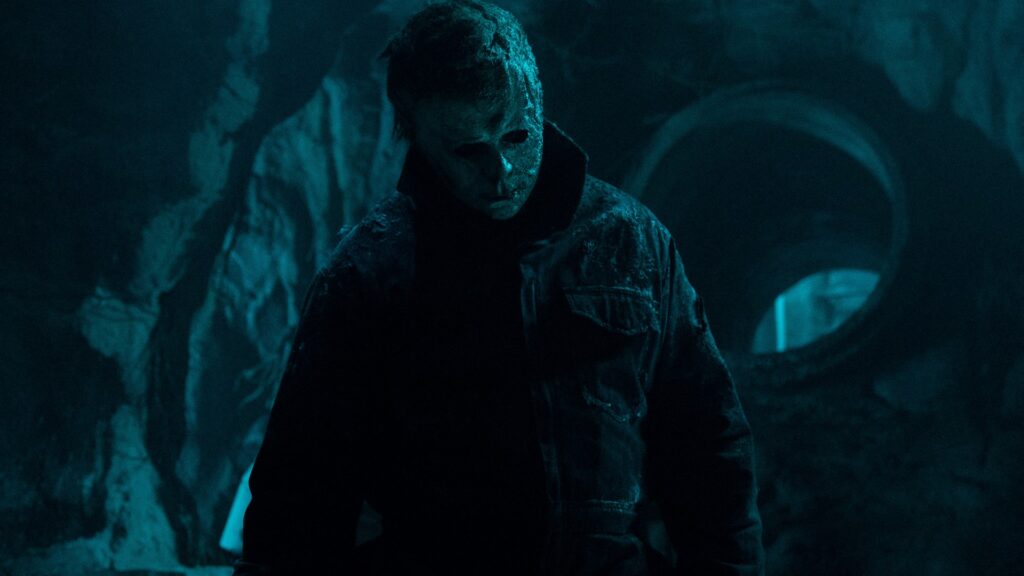
Michael Myers possesses a notable weakness tied to his fixations on Halloween, his family, and his chosen victims. This distinct trait sets him apart from the more impulsive killers typically seen in slasher films, rendering him a highly foreseeable menace.
However, A consistent motif across the entire franchise is Michael Myers’ exclusive activity during the season, sometimes exclusively on Halloween day and night. During periods of inactivity, he assumes an almost static demeanor, rarely engaging in conversation and often remaining seated, a behavior that even experts like Dr. Loomis struggle to comprehend or address in terms of his mental state.
In addition, His method of hunting also adheres to a specific modus operandi, extending beyond a mere timeframe and also he feels compelled to wear his iconic mask and jumpsuit before pursuing his family members, a prelude to his ominous endeavors.
Furthermore, It’s worth noting that without his mask exhibits reduced aggression towards those around him compared to when he’s adorned in his recognizable attire. This familiarity with his appearance prompts local law enforcement to not only anticipate his presence but also to identify him with precision.
So, given the extensive toll of deaths attributed to Myers, his threat level warrants an analogy to a natural disaster, demanding a comparable level of preparedness and response. October, in essence, becomes synonymous with “Michael Myers season,” prompting the call for heightened community support during this period.
Curiously, even with his predictable tendencies posing potential disadvantages, Myers benefits from the town’s failure to fully grasp the gravity of his presence. This oversight is counteracted by the perceptive Laurie Strode, who alone comprehends the peril that the town faces
Has Michael Myers ever experienced death?
No, Michael Myers has met apparent demise on multiple occasions throughout the franchise, only to resurface due to the recurring trend of reboot series breathing new life into his menacing persona.
Additionally, In the original 1978 Halloween film, Myers endures a barrage of stabbings from Laurie Strode, coupled with six gunshots from Dr. Sam Loomis. Dr. Loomis’s bullets propel Myers off a balcony, compounding his injuries. Yet, when Dr. Loomis investigates later, he mysteriously vanishes, highlighting his capacity to withstand extraordinary damage.
This incident underscored resilience beyond ordinary human limits.
In Halloween II, a shot to his eye leaves him sightless, but this impairment fails to halt him. The hospital explosion triggered by Dr. doesn’t deter him either.
Halloween 4: The Return of Michael Myers showcases Myers surviving being run over by a truck and enduring multiple gunshots.
Halloween 5: The Revenge of Michael Myers reveals his improbable recovery under the care of a hermit, whom he later kills.
Halloween: The Curse of Michael Myers introduces Tommy Doyle administering corrosives and a severe beating, rendering Myers unconscious. Yet, upon awakening, he proves robust enough to exact revenge on Dr. Loomis.
Even when Laurie Strode believes she’s finally vanquished her relentless pursuer by decapitating him in Halloween H20, the subsequent twist reveals that the masked figure wasn’t truly Myers.
Subsequently, Throughout the series, Myers’ uncanny ability to endure and escape demise underscores his supernatural resilience, adding to his enigmatic and fearsome reputation.
Is Michael Myers unable to speak?
No, Although Michael Myers is often depicted as a character who doesn’t speak much, he does have the ability to speak, as shown in Rob Zombie’s Halloween 2. This was a change from how he was usually portrayed, and some longtime fans of the Halloween series didn’t like this decision by the musician-turned-director.
In a key part of the movie, Myers, in a moment of anger, says the word “DIE!” as he fatally stabs his former psychiatrist, Dr. Loomis. This was different from how Dr. Loomis was shown in the earlier Halloween film. Rob Zombie changed the character to be more of an antagonist, which added to fans’ dissatisfaction with the film.
There have been theories that Myers’ prolonged silence might affect his ability to speak, but there’s no solid evidence for this. In reality, the muscles used for speaking are also used for everyday functions like breathing and swallowing, which keeps them working properly. Cases of coma patients waking up and immediately speaking support this idea.
In short, although Michael Myers doesn’t talk much, he’s still able to speak when necessary. His ability to be menacing without words shows that his silence adds to his eerie presence, and he doesn’t need speech to be a frightening character.
What’s the origin of Michael Myers being referred to as “The Shape”?
The term “The Shape” for Michael Myers originated in the 1978 Halloween film, where it appeared in the credits. This designation was introduced by John Carpenter, the creator of Halloween, and he used it to evoke the ominous and enigmatic presence that Myers embodied, especially when glimpsed in the shadows.
Interestingly, this moniker wasn’t a new creation by Carpenter. The concept of “The Shape” has roots in history, dating back to the late 1600s during the Salem Witch Trials. In those times, accused witches sometimes claimed that their malevolent spirits, or “the shape,” were responsible for sinister deeds, even when evidence suggested otherwise. Carpenter’s choice of the term thus added an intriguing layer of historical and symbolic depth to the character’s portrayal.
Does Michael Myers hold any regard for Laurie Strode?
No, he shows no emotional attachment to Laurie Strode; rather, he views eliminating her as a duty. Some fans speculate that his initial targeting of Strode might have been an attempt to safeguard his childhood home.
Throughout the Halloween series, Myers is often depicted as possessing childlike understanding and animalistic instincts. Like an animal defending its territory, he may have sought to remove any perceived threat.
In Halloween: Curse of Michael Myers, Myers is compelled to kill Strode due to her status as his last remaining family member. This is linked to the demon Thorn’s possession of him since infancy.
Although Laurie Strode is biologically related to Myers, having been adopted after her family’s tragic demise, he still senses the familial connection.
Despite their shared bloodline and mostly deceased family, Myers lacks any sentiment toward Strode. Evading his clutches intensifies her status as his target.
In addition, Once Myers chooses a target, he remains resolute, seldom deviating from his plan. Strode, rather than a sisterly figure, obstructs his rigid objectives. Having lost her biological family to Myers’ violence, Strode doesn’t regard him as an older brother. Instead, she feels compelled to eliminate him—a responsibility she has taken upon herself.
What is Michael Myers’ weight?
Some sources state 205 lb (93 kg), while others claim 230 lb (104 kg). Regardless, he’s portrayed as a hefty, powerful figure, exuding immense physical strength.
Moreover, This contributes to the fear he instills in both his victims and viewers. The 205 lb measurement likely pertains to shorter actors playing the role, while the 230 lb estimate aligns with taller actors. His weight falls within an average range for his height, aligning with the idea that he’s a regular person who has descended into madness.
How old in age is Michael Myers?
Spanning since 1978, the franchise depicts Michael at various ages. In the initial Halloween, he’s just 6 when he commits his first act of violence. After 15 years in a sanitarium, he’s 21 upon his escape and the ensuing killing spree that deeply impacts Laurie Strode’s life.
In the latest films, Halloween (2018) and Halloween Kills (2021), Michael is approximately 61 years old. This age is consistent since Halloween (2018) directly follows the original film, now cementing Michael and Laurie’s story arc as canon.
Who is the actor behind the portrayal of Michael Myers?
In Halloween Kills, the masked killer is portrayed by both James Jude Courtney and Nick Castle, with both being credited as ‘The Shape.’
Notably, Nick Castle originally portrayed The Shape in the 1978 original Halloween. However, in the same film, Tony Moran’s face is exposed when Laurie removes the mask from him.
FAQs
How smart is Michael Myers?
Contrary to the notion of him possessing an animalistic mindset, Michael actually demonstrates considerable intelligence. He’s capable of outsmarting and manipulating several individuals to his benefit. For instance, he often employs tactics like patiently stalking and ambushing his victims before delivering the fatal blow. Moreover, he has a tendency to leave his victims in a prominent manner, serving as a chilling display for others who might cross his path.
Is Michael Myers pure evil?
Yes, Michael Myers is consistently portrayed as the embodiment of pure evil, a depiction solidified through the films themselves, the creators who shaped his character across nine movies, and even the opinions of individuals in a survey.
Is Michael Myers Based on a true story?
No, Michael Myers is not based on a true story. He is a fictional character created for the Halloween film franchise. While the films may draw inspiration from real-life events or urban legends, the character of Michael Myers and his story are entirely products of fiction.
What is Michael Myers afraid of?
Interestingly, Michael does harbor certain fears, albeit in a different context. There’s an implication that he conceals his face and emotions behind his iconic mask. This is because, underneath the mask, Michael’s face is portrayed as normal and even handsome. Since the source of his influence stems from inducing fear in others, it’s conceivable that Michael might fear losing that power. The mask, in a way, becomes a tool for him to project an image of terror and maintain his aura of fear.
Conclusion
Clearly, Michael Myers lacks a consistent height due to his portrayal by various actors. However, according to his IMDb page, he is listed as 6 feet 3 inches tall also 6’9” Similarly, his age and weight pose challenges for exact determination, as these factors fluctuate across different films and performers. Therefore, there isn’t a singular answer for these aspects of his character.







